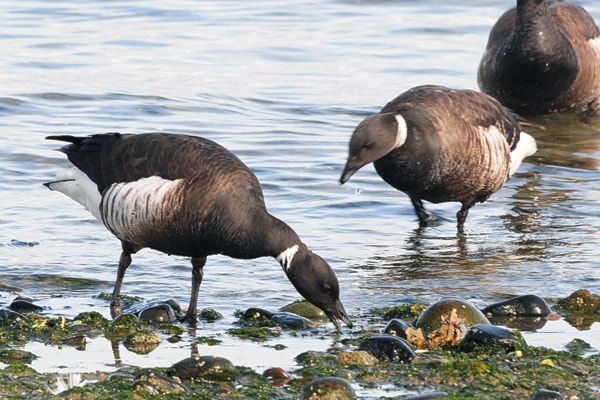For the second straight year March has roared in like a lion with late winter storms that have created havoc for many wildlife species. Easter is the first opportunity to enjoy the milder weather and celebrate the return of spring.
For the past 15 years this has also been a time to celebrate a special outdoor event in the Parksville and Qualicum area, the Brant Festival. This year's festival takes place from March 29 to April 9 and includes nature walks, nature camps, a variety of tours, bird counts and even an eagle release.
The festival celebrates the annual arrival of the brant geese to the eastern shores of Vancouver Island from Parksville to Saratoga Beach. These geese return each year to coincide with the herring spawn and this is an essential stop over on their migration north.
This area of Vancouver Island is also an important stop over for many other avian species that make up a third of the Pacific Flyway water bird population. Brant geese leave Mexico and Baja, Calif. flying in close proximity to land non-stop all the way to Vancouver Island. On the return migration from Alaska they fly way out over the Pacific Ocean, covering a distance of 4,500 kilometres.
Often mistaken for Canada geese, brants are smaller with shorter necks and weigh between 1-陆 and 2 kilograms. The most distinguishing feature of these geese is their "white necklace" that wraps around the top of their neck.
Their arrival on our local shore in mid-March provides them with rich calorie-laden food enabling them to top up their fat supplies which are crucial if they are to continue the final leg of their migration to Alaska where they will nest.
The staple diet for these birds is eel grass but they also eat sea weed and sea lettuce; in their Alaskan breeding grounds the young dine on aquatic vegetation and a multitude of insects.
Brant geese are easy to spot during the day as they fly or swim close to the shore feeding as the tide ebbs. Dusk sees them heading for the safety of the open water for the night before returning at daylight to continue feeding.
Undisturbed feeding is essential for these and other migratory water birds during their stop over; this is their last chance to take on extra fat supplies and preen their feathers. These geese are very sensitive to human presence and people are asked to respect their feeding grounds and stay away from the waters edge.
One of their favourite feeding areas locally is the Goose Spit in Comox, where they feed on the outside of the spit and use the shallow inner lagoon for shelter from the storms. Local bylaws are in place from mid-March until May 20 to ensure they are not harassed.
Like many other water birds, brants often arrive at their breeding grounds before the snow has melted, leaving them only two snow-free months to build their nest, produce the eggs, rear the young, and consume enough food to sustain them for their gruelling return migration to Mexico.
MARS is holding their annual Open House at 6817 Headquarters Rd. in Merville on Saturday, April 7 from 11 a.m. to 3 p.m. It's a chance to meet our ambassador birds and find out more about our society. For more information visit our website at www.wingtips.org. To report injured or orphaned wildlife call 1-800-304-9968.
Sandy Fairfield is the educational co-ordinator for the Mountainaire Avian Rescue Society (MARS). The MARS column appears every second Friday.



